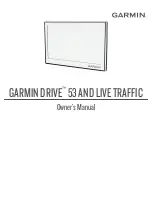
Watson Industries, Inc.
DMS-EGP02 Rev A 03/28/2008
9
2.
An “I” or “i” sets the unit to Inertial mode. This is the default mode at power up and is the
normal operating mode. Switching to this mode clears the Reference Command mode.
This will also disable the logic input Reference Command and Free Mode Command until
the next time the unit is powered up. Double spacebar at initialization is required for access
to this command.
3.
An “F” or “f” will disconnect the references from the attitude system and is the Free Mode
Command. Free mode is used to make the system ignore the references during high
maneuvers and brief disturbances. This mode is not intended for use except in brief
intervals, since errors will grow geometrically. This will also disable the logic input
Reference Command and Free Mode Command until the next time the unit is powered up.
This command does not require a double space bar at initialization to be in effect.
4.
An “H” or “h” will remove bias correction from the system and is the Hold Mode
Command. This mode is useful is highly dynamic situations that may last for a few minutes.
Hold mode should not be used for more than a few minutes, because errors can accumulate.
This command does not require a double space bar at initialization to be in effect.
5.
A “K” or “k” will clear the Free Mode Command and the Hold Mode Command.
6.
An “!” will reinitialize the unit. Further, the access to initialization is inhibited such that a
spacebar command must be sent within 2.5 seconds of the “!” command for initialization to
be engaged. This command does not require a double space bar at initialization to be in
effect.
There are two output format commands: “_” for decimal output and “^” for binary. See second part
of Appendix A for more information on changing output formats. There are several interface
commands as well: “:” will toggle the output to send a frame of data upon receiving any non-
command character and “+” will toggle the output for no output data. These and other changes
can be made permanent by keying in the quote (“) character. Double spacebar at initialization is
required for access to all of these commands.
The “&” command calls a menu which allows any of several parameters to be set. From this menu,
the user can change system time constants, data channels for serial output, heading source, velocity
source and baud rate. Double spacebar at initialization is required for access to this command.
The commands “~”, “@”, “#”, “$”, ‘(“, “)”, “{“, “}”, “|”, “<”, “>” and “?” are used by the Watson
factory to calibrate the unit and should be used only with the assistance of the factory. If an
undesired function is called, a “Q”, and sometimes Escape or a Delete will interrupt the command
and return to operation with the least disturbance to the system. All other unspecified characters
such as carriage return, line feed and space are ignored by the system.
If there are problems with the system “hanging up” during the binary output mode, check for cross-
talk between the serial transmit and receive line in your installation. In addition, check to see that
the communications program used is not sending an echo. This will not happen in the decimal or
hexadecimal modes because command characters recognized by the system are not produced in
those modes. Please note that the signal and power ground are isolated from one another.










































